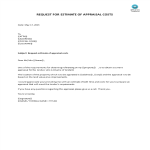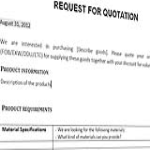RFP Response Checklist

Guardar, completar los espacios en blanco, imprimir, listo!
How to write an rfp response template? What should be included in response to RFP? Download this RFP Response Checklist template now for your reference.
Formatos de archivo disponibles:
.docx- Este documento ha sido certificado por un profesionall
- 100% personalizable
Sales Ventas RFQ checklist lista de verificación list lista request solicitud Request For Proposal Solicitud de propuesta Rfp rfq request for quote rfq solicitud de cotizacion request sample rfp response template rfp response template doc pr agency rfp template university rfp building construction rfp template word rfp proposal template rfp request for proposal government rfp template rfp template microsoft word marketing rfp word template rfp templates simple rfp template how to write an rfp response template how to respond to rfp template rfp format rfq proposal rfq request for proposal rfq request for quotation
How to write an rfp response template? What should be included in response to RFP?
There’s a lot of experienced people in business that are still asking their selves about what their response is supposed to look like when they receive a request for proposals (RFP). Here is a proposal checklist on what to say in response to the recently received RFPs. The content changes each time based on what the RFP requires so you can fill in that part after figuring out how you will solve the client's requirements:
- Background: briefly discuss their general criteria in the background. An illustration would be a company that wanted to link all of the computers in their office to a local area network so they could share printers and storage space and run tape backups automatically.
- Scope: Explain in depth how you plan to address each item in the RFP. To demonstrate your configuration, use diagrams. This will be your proposal's longest part and most likely feature numerous subsections.
- Schedule: When do you plan to begin? How long will each project require? Make a table outlining your anticipated timeline for finishing the project.
- Staff: This paragraph is optional. Some businesses are curious about the project's team members. With regard to government projects, this is more crucial. Send up your resumes here.
- Cost: Breakdown the cost by equipment and labor time to come up with your expected budget. Include all the relevant payment terms, INCO terms, discounts for early-bird, and other cost or payment information.
- Supporting Information: Add any supporting info here (for example, if you're trying to convince them to use a specific type of networking technology, back up your reasoning here with third-party quotes, research, test results, etc.). You can also add information about similar projects you have completed for other firms and what the results were of those.
- Testimonials: Include testimonials from clients, clippings from news papers, etc.
A similar request for more details regarding the sales of products or services that you may offer is; Request for Information (RFI) and Request for Quotation (RFQ).Also make sure to check out this Sales Quotation Cover Letter template. If you consider to reject the request for proposal, consider to send this RFP Rejection letter template.
Download this RFP Response Checklist template now for your reference.
DESCARGO DE RESPONSABILIDAD
Nada en este sitio se considerará asesoramiento legal y no se establece una relación abogado-cliente.
Deja una respuesta. Si tiene preguntas o comentarios, puede colocarlos a continuación.


